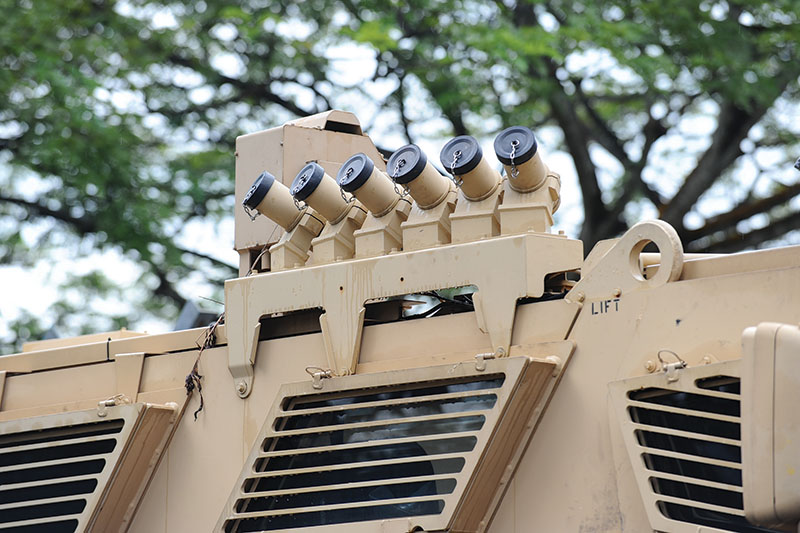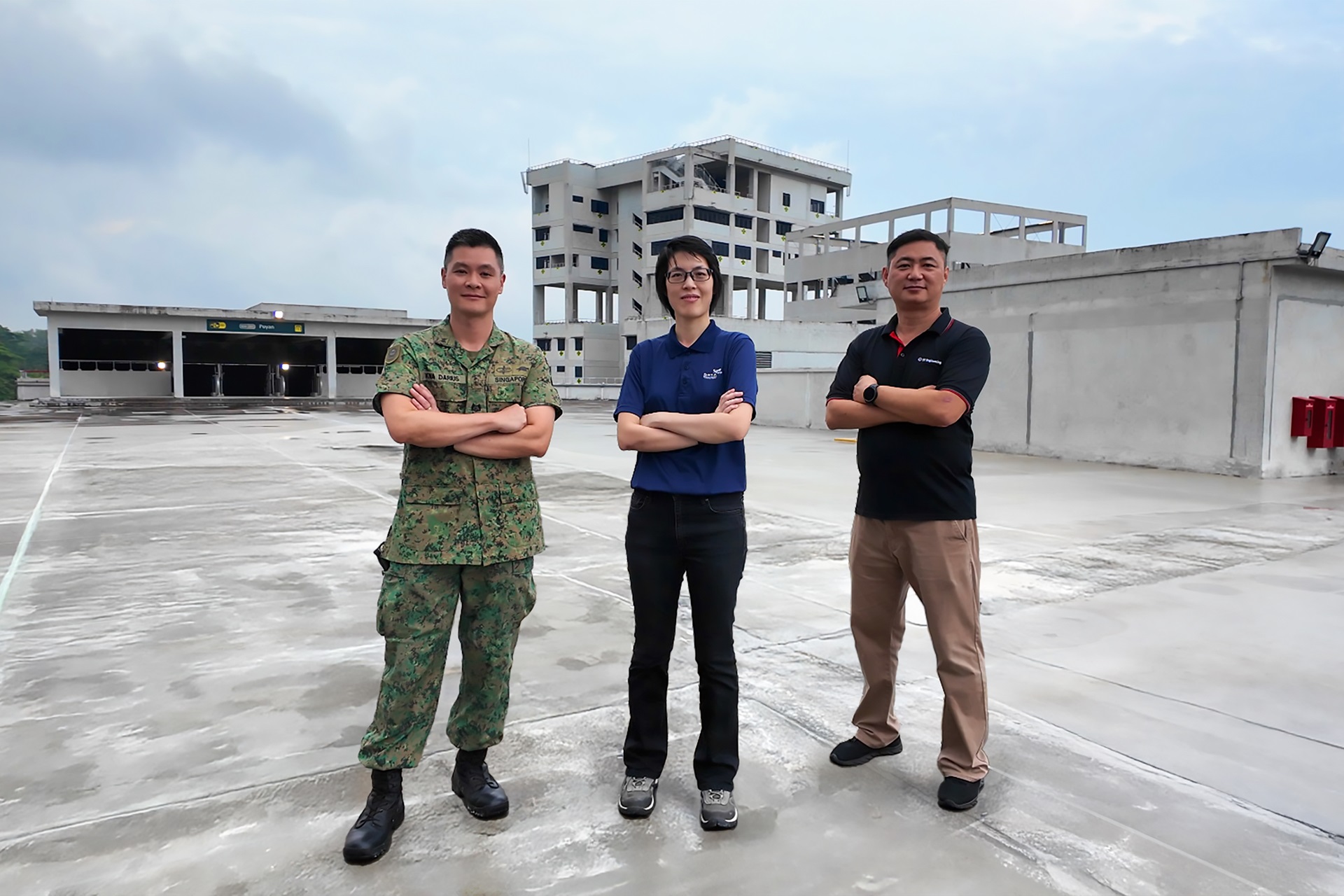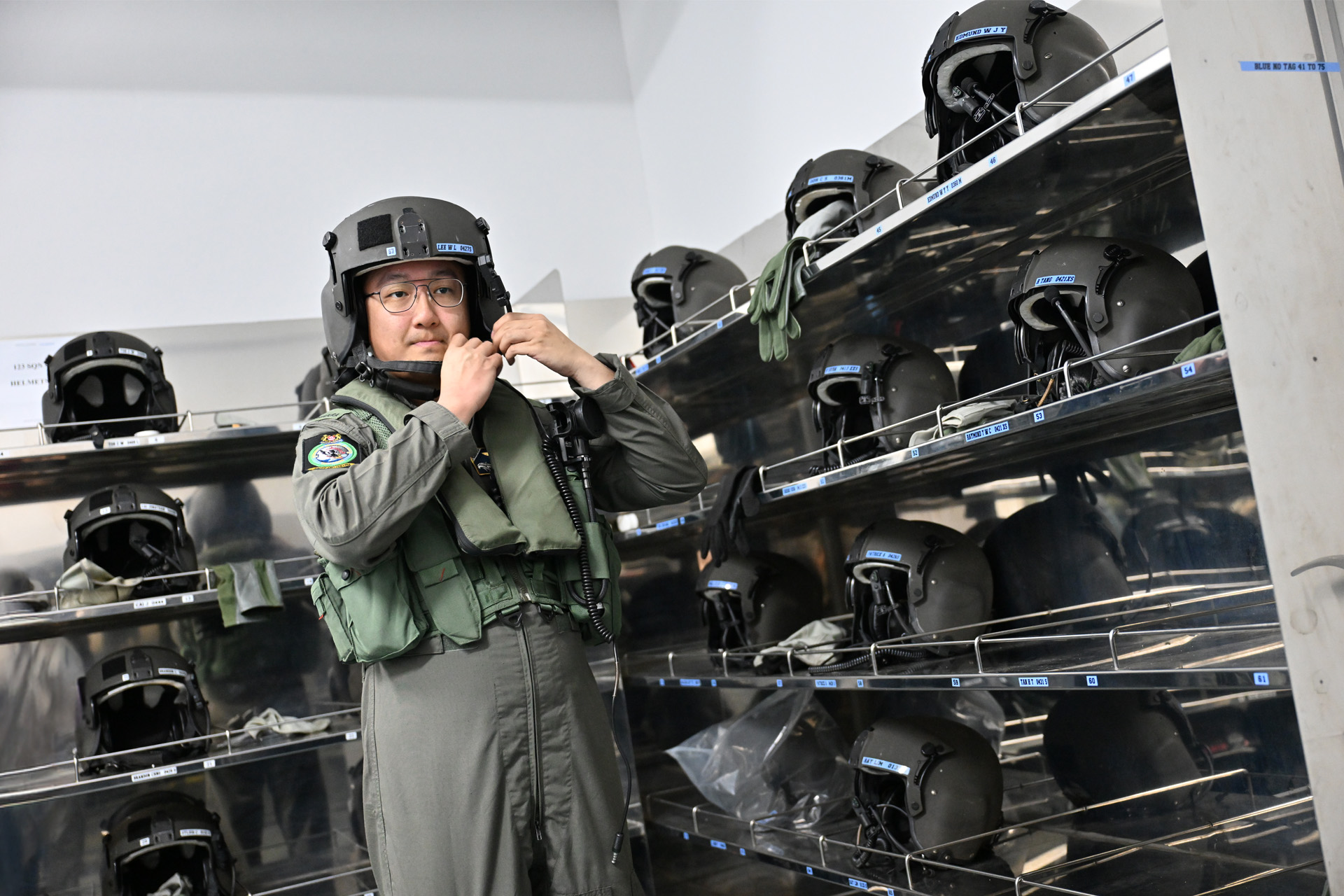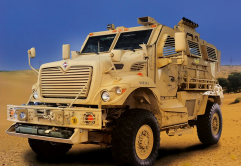TECHNOLOGY
TRUCKS OF SURVIVAL
25 Nov 2013

To defend its troops from Improvised Explosive Device (IED) attacks, the Singapore Armed Forces (SAF) bought the Multi-Purpose Tactical Vehicle (MPTV). Find out how this truck keeps its passengers safe.
In an arid desert of Afghanistan, a sand-coloured truck carrying a group of soldiers is moving swiftly across the rough terrain. Boom! An explosion sends the vehicle flying and flipping over several times before landing on its side.
Despite the heavy damage taken from the IED, the portion of the truck where the troops are seated remains intact. The soldiers are shaken but unharmed.
A normal vehicle would have been obliterated by such an attack, but the MPTV is armed to the teeth with features that protect its passengers from IED and mine attacks. Such attacks were a very real daily threat during Operation Blue Ridge, the SAF's deployment in Afghanistan, as part of Singapore's contributions to multinational stabilisation and reconstruction efforts.
Originally named the Mine Resistant Ambush Protected Vehicle by the United States military, the SAF's version incorporated various systems to make it their own and fulfil various roles.
For mine protection, the MPTV features a capsule compartment and a V-shaped hull below the capsule. The design of the hull diverts IED blasts sideways away from the vehicle, so as to minimise the damage dealt to the crew seated within the capsule compartment.
Planning for the customisation of the MPTV started in 2008, before the 15 vehicles bought from the US even arrived. This was necessary in order to pack the vehicles with the necessary equipment and features required for the SAF's operations, and to ensure that they can be deployed quickly to ongoing operations in Afghanistan.
The MPTVs were eventually shipped to Afghanistan for Operation Blue Ridge in January 2011 and were deployed there till September 2012.
Weapon enhancements
As the MPTVs acquired came without any weapons, it was up to the SAF and the Defence Science & Technology Agency to make sure that the vehicles were well-equipped for threats in the battlefield.
The MPTVs have two variants: a Command and a Trooper. As the name suggests, the former is fitted with more communications equipment for command and control whereas the latter is equipped with the Remote Control Weapon System (RCWS) to engage in battle if needed.
As with the Terrex Infantry Carrier Vehicle, the RCWS in the Trooper variant of the MPTV allows the vehicle commander to control the modular weapon system, positioned at the top of the MPTV, from within the vehicle.
This mitigates the risks that he would be exposed to if he had to control them from the top. The standard configuration is with a 0.5-inch heavy machine gun, but the RCWS can be fitted with other armaments such as grenade launchers.
Six 76mm Smoke Grenade Launchers (SGLs) were installed on each side of the vehicle to add the option of using smoke to reduce visibility, be it to mask an attack or a quick escape.
To protect the vehicle against small arms, the MPTV's windows are all fitted with armoured glass. Should the need arise, extra armour protection plates can also be added to the sides of the vehicle to enhance its protection against bigger weapons.
Networked communication systems
In the battlefield, a network of closed communication systems between vehicles is essential. To integrate the MPTV into the network used by other SAF vehicles, the Battlefield Management System (BMS) was installed.
Along with the BMS in other vehicles such as the Terrex, this system allows each vehicle to track the location of friendly forces, letting them know where their next move would be and strengthening the overall communication of the entire military network.
Besides the BMS, which is the main communication system used in the SAF between vehicles, several other communication system additions included the Satellite Mobile Handset System and the Combat Net Radio. While the former allows communications across countries such as from Afghanistan to Singapore, the latter is mainly used for communication among personnel on the ground.
Keeping up with times
True to its name, the MPTV can take on other roles besides the transportation of troops and high-value goods such as ammunition and weapons. It can be utilised for protecting a convoy of vehicles (by having the MPTV lead and take the brunt of any attacks), or be deployed for patrol missions.
With the SAF's withdrawal from Afghanistan in June, the MPTVs, which were originally bought for the deployment, will now be used for training. Some of these include learning how to drive the vehicle, operating the systems as well as responding against threats.
And with ever-evolving threats, the SAF's G5 Army Systems Integration Office will continue to review and ensure that the MPTV meets operational and training demands, and if necessary, carry out enhancement works to ensure that the SAF stays ahead of the times.
ALSO READ IN TECHNOLOGY

AI joins the fight in national cyber defence exercise
12 Nov 2025
AI and closer collaboration among agencies and industry are taking centre stage in this year’s Critical Infrastructure Defence Exercise (CIDeX).

They built this city
01 Oct 2025
Turning vision to reality: the team behind SAFTI City clinches the Defence Technology Prize 2025 Team (Engineering) Award!

Operating over skies & seas
22 Aug 2025
This gear is designed to help a Sensor Supervisor survive emergencies in the air and at sea.




